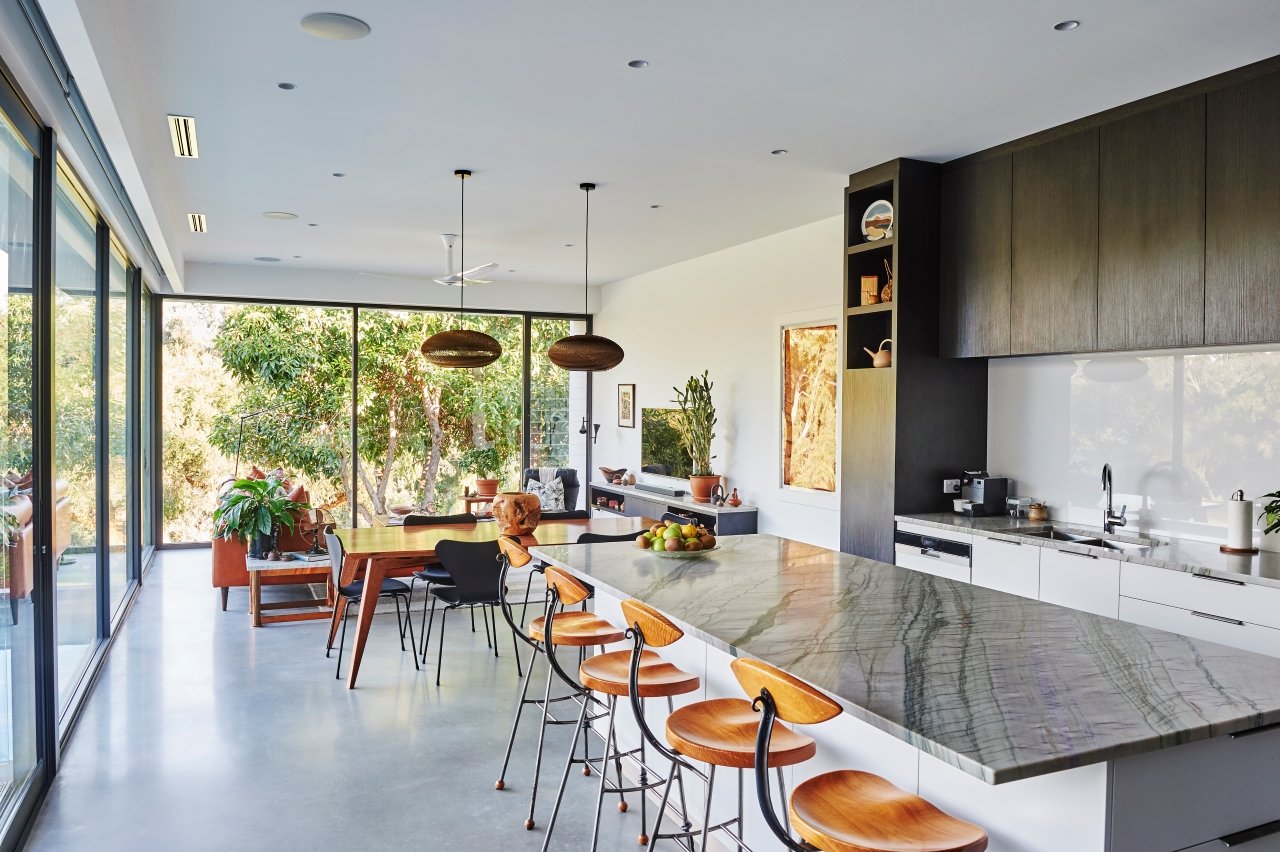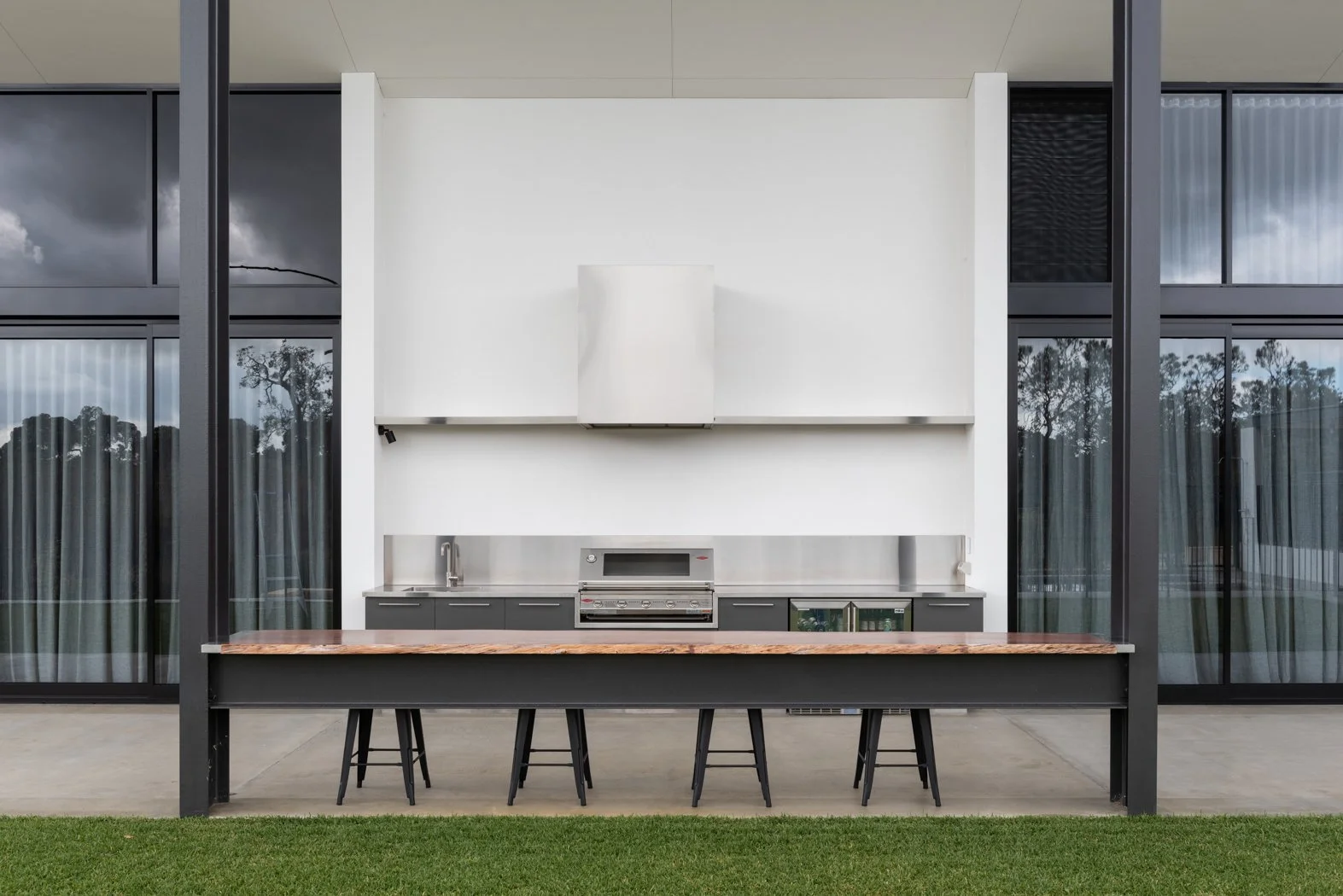Whether you’re building a new home or renovating an old one, chances are you’ll be needing to choose some benchtop materials. For these, aesthetics and affordability are usually the top priorities, but it’s important to remember that benchtops are there to be utilised, and functionality should never be overlooked. So, below, let’s take a look at some of the most popular benchtop materials and explore their pros and cons.
ENGINEERED STONE
Also known as artificial stone, manufactured stone, or composite stone, engineered stone is made with crushed natural stone that’s bound together with resin and water. It’s incredibly popular and we’ve installed it in multiple Arklen projects.
Pros
One of the most popular options for its affordability and availability
Highly versatile, it can come in a wide variety of shapes, sizes, colours and patterns
Design is highly consistent, especially in comparison to natural stone
Probably the most durable option, it’s scratch, chip, stain, heat and fire resistant
Cons
Not natural, and nor does it look like it
Somewhat limited in size, but this will vary depending on the manufacturer
Not UV resistant, so your choices in direct sunlight will be limited
PORCELAIN
Porcelain benchtops are essentially very dense ceramic slabs. They’re made from powdered clay and coloured pigments that have been bound together under high heat and pressure.
Pros
Come in a wide range of colours, patterns and finishes
Highly durable, they’re scratch, stain, heat and fire resistant
Suitable for outdoor use, even in direct sunlight
Can go as thin as 10mm for a sleek, minimalist design
Induction cooktops can be installed under the benchtop so they’re virtually invisible
Also a good choice if you want an undermount sink (in which the lip of the sink sits below the benchtop)
Cons
Quite a brittle material that can chip or crack relatively easily
One of the more expensive options to purchase and install
Will have visible seams on mitred edges – may not the best choice for a breakfast bar overhang where the edge would be visible
Needs to be cut with specialised machines, so may need to be transported to a different supplier
CONCRETE
Concrete benchtops are made by pouring a specialised concrete mix into a form (or mould) in the shape of your desired benchtop. This can be done in-situ or off-site, although in-situ is quite complicated as it needs to be completed before any cabinetry is installed.
Pros
Standout aesthetics that are particularly popular for industrial styles
While other materials can usually be no larger than 3m, concrete is unlimited in both shape and size—outside of finding enough people to carry it
Sinks can be installed directly into the concrete for a seamless, easy-to-clean finish.
Scratch, heat and fire resistant
Cons
Without a high-quality sealant, concrete is a porous material, so it can be susceptible to staining
If not treated well, it may also deteriorate quicker than other options and become less hygienic if not re-sealed
A very heavy material it may need extra reinforcements
NATURAL STONE
Natural stone benchtops are made from slabs of stone taken directly from a quarry. They’re then cut to size, polished and installed. They can come in a wide range of different stones including (but not limited to) marble, granite and quartzite.
Pros
A natural material that will easily become a stand-out feature of your home
Each slab is one-of-a-kind and will be unique in its colour, pattern and veining
Cons
The veins can create break lines, so natural stone can be quite fragile during installation—make sure you have good trades
Time and a bit of love is usually needed to care of natural stone—marble can be particularly susceptible to staining
Needs to be sealed regularly to reduce the chance of staining, but this is still no guarantee
Easily the most expensive option, for both the stone and labour
Slab sizes can be limited depending on how they’ve come from the quarry
TIMBER
Solid timber benchtops are another gorgeous, natural choice that will add warmth to any home. They also vary depending on your choice of wood, but we suggest opting for durable options—particularly hardwoods—like Victorian Ash, Blackbutt or Bluegum.
Pros
Versatile and suitable for virtually every design style
If damage occurs, it’s relatively easy to sand down and reseal
Depending on your chosen species, they can be the most sustainable benchtop material
A great way to recycle or repurpose timber from a demolished home or elsewhere
Can also be very affordable
Cons
More vulnerable to scratches and staining—spills should be wiped up straight away
Not very heat resistant—always use a chopping board or mat under hot pots or pans
To reduce the chance of damage and ensure hygiene, sealant should be reapplied yearly
STAINLESS STEEL
Most often found in commercial kitchens—for very good reason—stainless steel benchtops are becoming increasingly common in residential homes. They come in multiple finishes, including brushed, mirrored and matte, and are particularly great for those wanting an industrial aesthetic.
Pros
Very hygienic and easy to clean
Highly durable, they’re stain, chip, heat and fire resistant
Sinks can be welded into the benchtops for a seamless finish
They’re weather resistant and a good option outside, even in direct sunlight—note virtually all public barbecues in Australia
Cons
Can dent and scratch, although some people appreciate the ‘worn’ look that develops over time
Mirrored finishes are quite susceptible to fingerprints and may require regular cleaning
If not installed over timber (or another buffer) they can be noisy when paired with pots and pans
In today’s market, there are a huge variety of benchtop materials that will suit different design styles and uses. While none are perfect, we have no doubt that there will be an option to suit your needs. If you’re finding the decision process a bit overwhelming, though, always remember that your builder and/or designer is there to offer advice. And if you’re keen for that person to be us at Arklen, don’t hesitate to get in touch!














